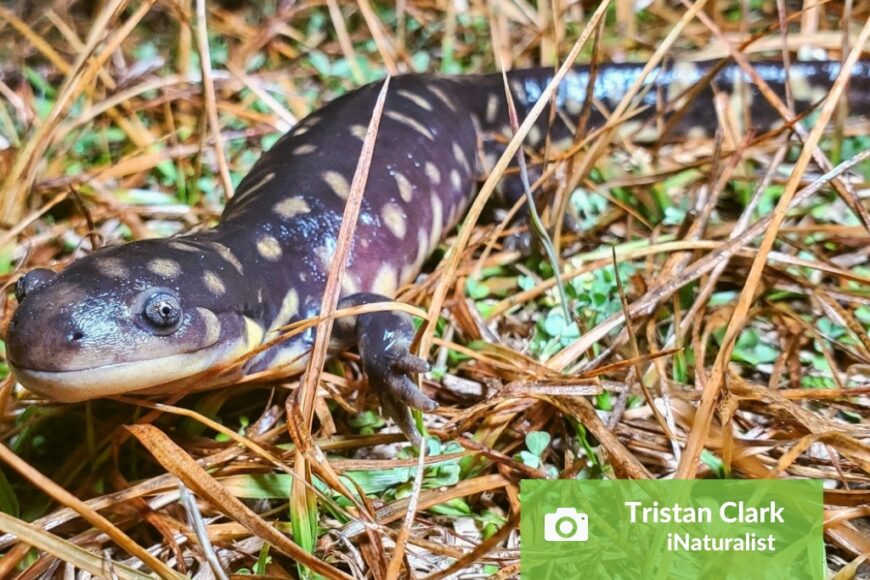Dawson Trail Dispatch, written by Norm Gregoire, November 2022
Page 17 https://issuu.com/dispatch222/docs/dawson_trail_dispatch_november_2022
Over the course of this past summer there was one common theme that would get brought up every time I would mention the weather while talking within the community: “Well, it sure has been a wet one compared to the last few summers”. I had to agree. Although a rainy summer day isn’t exactly what everyone likes, they are essential to keeping the environment around us balanced. Also noted by others was an increase in mosquitoes, frogs, and salamanders. This includes an at-risk species, the eastern tiger salamander.
We do have a few different species of salamander in Manitoba, so identifying one correctly may take a closer look. The adult eastern tiger salamander is one of North Americas largest salamanders growing upwards of 35 cm. They are dark in colour with dull yellow, orange, or green spots on a stocky body. As an amphibian, salamanders have distinct physical stages of development. In the egg or larval stage, it may be near impossible to differentiate between salamander species.
Also, as an amphibian, the eastern tiger salamander depends on both aquatic and terrestrial (land) habitats to complete their life cycle. In the early egg or larval stage, the water source that is used must be free of predatory fish and be present for three to seven months a year. Terrestrial habitat includes grasslands, savannas, and woodland edges usually adjacent to breeding sites. While on land, the salamander will be foraging, burrowing, or overwintering.
This need for both aquatic and terrestrial habitats increases the potential for threats caused by an unhealthy, fragmented ecosystem. A major concern for the eastern tiger salamander is road mortality. Last month I came across a salamander on a quiet gravel road. During the fall, salamanders can be more easily observed as they travel in search of overwintering grounds. I decided to make sure this particular salamander made it safely to the other side. When possible, remember it is always best to give wildlife space. This is especially true for handling amphibians. Their skin can be sensitive as the pores are used for breathing. What is on your hands may then be transferred. In the age of daily hand sanitizer use, I think it is best to leave our coldblooded friends to find their own path, or in my salamanders’ case slowly ‘shoo’ it off the road.
It should be noted that their permeable skin does make amphibians vulnerable to toxins and draughts. So, you may not appreciate a rainy summer day, but the eastern tiger salamander sure does; in fact, they depend on it! I find it interesting to learn about these connections in nature; this shared ecosystem of ours has a way of keeping itself balanced and we must do our part to not tip the scale. Here’s to seeing more eastern tiger salamanders in the future!
For more information contact Norm Gregoire at sarcommunityliaison@gmail.com

